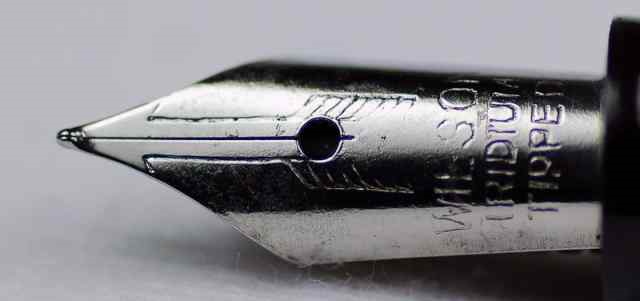Wilson Vacumatic, the pen that drafted our Constitution
We are a forgetful, if not a downright ungrateful people. Unless, off-course it is politically expedient to remember things, in which case we even tend to remember things that did not occur. But that again is another point, lets get back to things that we don’t remember as a people, as a Nation – things that helped shape our history, making us who we are today.
Take the Constitution of India for example. Well, it was drafted by a committee headed by Babasaheb Ambedkar. The calligraphy – yes, the original copy was handwritten – was done by Prem Behari Narain Raizda, the border of each page beautified and decorated according to a theme by Nandalal Bose and his students from Shantiniketan. The master calligrapher had taken six laborious months to complete the onerous task of writing the 395 articles, 8 schedules and the preamble. He had used 432 nib holders of no. 303 variety for the entire process. Legend has it that, when the then Prime Minister had requested the calligrapher to take up the task and enquired about the amount that he will charge, the master wordsmith had undertaken to do the work for free, insisting on including his name on each page and that of his and his grandfather at the end for posterity. But then again, that too, is another story.
What that brings us to, is one of the most glaring examples of our apathy – what pen did Babasaheb, Dr Bhimrao Ramji Ambedkar use to actually draft the Constitution? More importantly, where is the pen?
It is widely surmised that Babasaheb had used a Wilson thick-nibbed Orange (there is a very informative post by Purvi Sanghvi, whose grandfather had founded the Wilson Pen Company). However, the pen itself seems to be lost, sucked into the black hole of our collective indifference.
But was it a Wilson “Vacumatic”? A knockoff of the famous Parker Vacumatic, Wilson’s offering was not only an extremely well-crafted piece that followed the Parker’s design and construction to the minutest of details, but was also hugely popular in its day as a very reliable writer. Wilson, the makers of the pen, were already an established entity and there is enough reason to believe that the pen would have found its way into the hands of such an erudite and distinguished scholar by the dint of its sheer performance and Indian origin, at a time when the Nation was taking its first faltering steps towards self-reliance.
The Wilson company, which had gone on to become one of, if not India’s biggest pen maker, had a very sad end, when after a family spilt and reorganisation its knell was sounded by labour unrest. It was forced to shut shop following a second, prolonged and more strident labour strike. That means, unfortunate as it is, with the makers of the instrument gone, there is little that can be learnt from the company itself. What is even more sad is that in the three odd decades between Babasaheb drafting the Constitution and Wilson shutting shop (in the 1980’s) precious little was done to preserve this instrument that had literally crafted the document that guarantees us our Fundamental Rights.
Apparently, after the demise of Baba Ambedkar, the pen was in the safe custody of his assistant SS Rege, who in turn, had handed it over, with some other personal effects of Babasaheb to Dr Arun Kamble, the All India head of the Panthers Party and a dedicated follower of Babasaheb. There were reports of Dr Kamble talking to the British Museum for the display of the pen as he was dismayed by the absence of a proper Museum dedicated to Dr Ambedkar. Both SS Rege and Dr Kamble have passed away since then, with no further mention about the pen from either. As for the British Museum, nothing is immediately known about whether they are really in possession of the Indian Constitution’s Grail pen.
A part of our National legacy, and I sincerely hope I am wrong, is gone forever.
Postscript:
Surprisingly, the Wilson Vacumatic, which used to proudly carry the “Made in India” stamp on itself and was once used extensively around the country, find very few, even muted mentions in the fountain pen collector’s circuit. Naturally, the Parker Vacumatic is much more easily available and perhaps therefore, freely discussed. Even the Blue Diamond from Parker, which was introduced in 1939 and is generally considered to be a rarity these days, is more visible than our homemade Wilson. For the uninitiated, the Vacumatic was launched formally by Parker in 1933 in place of the Duofold, their then premier offering. The Vac continued to be in production till 1948 in USA (and 1953 in Canada) and were the pioneers of the use of laminated celluloid in the body. They were pump fillers and were known for their huge ink carrying capacity. There is no reason to disbelieve that the Wilson too had displayed the same characteristic features.
- note: all photographs sourced from the net

